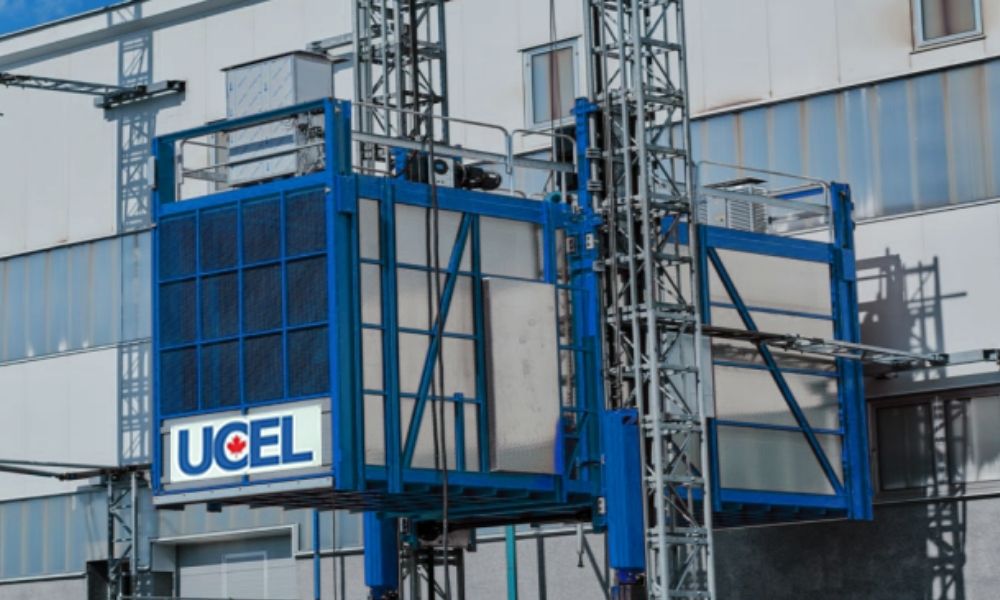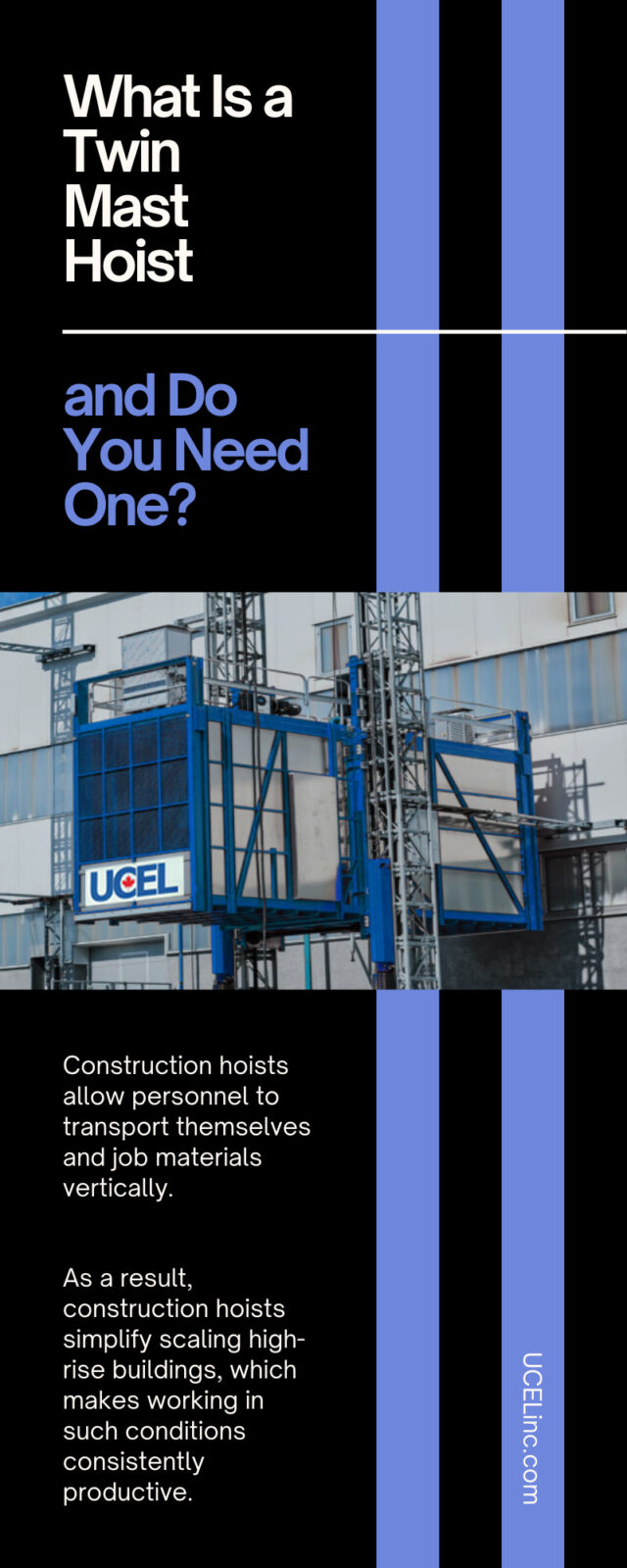Construction crews rely on various equipment for transporting materials on the job site. One of the transportation methods available is a twin mast hoist.
These high-capacity hoists provide a safe and efficient way to carry material and personnel on-site. After all, the larger the scale of the project, the easier it is to lose an efficient workflow without the proper equipment.
Given the many construction hoist designs on the market, finding the best one for any given project requires an understanding of the job site conditions and the construction hoist options. So, what is a twin mast hoist, and do you need one? Keep reading to learn the essentials of twin mast hoists on a job site.
Twin Mast Hoist Basics
Construction hoists allow personnel to transport themselves and job materials vertically. As a result, construction hoists simplify scaling high-rise buildings, which makes working in such conditions consistently productive.
However, construction sites vary in many ways. Depending on the available space and environmental conditions, heavy equipment must accommodate various specifications at every job site. Thankfully, job site crews can rely on twin mast hoists to accommodate heavy-duty or super high-rise projects. That way, projects that require lifting capabilities that surpass the capacity of a single mast can be completed in exactly the same fashion.
Often, twin mast hoists are used to lift special oversized curtain wall, pre-fabricated bathrooms, or custom fixtures like oversized kitchen islands.
Like any equipment on a construction site, twin mast hoists require proper care to function safely. Before exploring the applications for twin mast hoists, let’s dive into the safety standards for using them on buildings.
Safety Standards
Twin mast operators should have their manufacturer’s product manual nearby to read on-site. Having the product manual available to reference also assists in one of the most critical safety measures: prestart inspections. Like other equipment operators, mast platform operators must inspect the machine before a daily shift. In doing so, the operator can spot signs of damage or necessary maintenance, avoiding dire accidents in the process.
Further, it’s integral for operators to know that load capacities are not suggestions. Surpassing the hoist’s load capacity ensures the lift can’t operate as intended. Exceeding load capacity can result in dangerous and costly accidents.
Luckily, the product manual should lay out all the details regarding load capacity. Of course, if you can’t find the information in the manual, don’t hesitate to reach out to the manufacturer for clarification. Abiding by the maximum load capacity will help you keep the job site responsible without hindering the speed or quality of your work.
Knowledge and Gear
As you can see, knowledge of the system and its components is an integral tool for using construction hoists properly. For instance, dismantling your product requires a precise order of events to keep the mast stable.
Beyond dismantling, knowing all the essential hazard prevention methods with twin mast hoists can help your crew avoid various dangerous events
Likewise, the surrounding platform’s planking materials should be strong and ample enough to provide reliable travel for personnel, another method of preventing falls during the project. Whether you use metal or wood planks, ensure your setup abides by OSHA guidelines.
If you follow these guidelines, you can avoid dangerous accidents and hefty fines. As you’ll learn below, there is one more task critical to your safety standards: routine maintenance.
Routine Maintenance
As you know by now, the twin mast hoist’s manual is a go-to for many of your safety and technical specification needs. Besides becoming familiar with proper operating procedures, crews using twin mast hoists should take note of all maintenance tasks. Staying up to date with maintenance is necessary for keeping the machine operating efficiently and safely.
Simply put, make sure your team keeps track of upkeep tasks and oversees their completion when necessary. In doing so, they can help the construction hoist perform to the best of its abilities.
The importance of routine maintenance further highlights the benefits of knowing how your machine functions inside and out. Of course, our titular question remains: what is a twin mast hoist, and do you need one? Now that you know the answer to the first part of the question, let’s dive into the second half and explore the standard applications.
Standard Applications
As mentioned at the beginning of this guide, twin mast hoists are ideal for heavy-duty applications or on super high-rise structures. More specifically, to lift unusually oversized or overweight materials. Sometimes, this is because crane lifting voids a warranty.
Carrying around heavy equipment requires a transportation unit that can meet those load requirements, and twin mast units present a convenient solution. That said, when should you use these over the average construction hoist?
After all, the average construction hoist’s maximum load capacity is around 7,000 lbs, which can certainly be helpful on specific job sites. However, at UCEL, we offer construction twin masts that can carry hefty loads up to 15,000 lbs maximum. Instead of breaking up 15,000 lbs worth of personnel and equipment between multiple trips, you can rely on a quality twin mast unit to get the job done in one trip.
Twin mast hoists also accommodate bulkier equipment and larger crew sizes thanks to the more space available. For example, you UCEL provides twin mast hoists measuring 25 feet long. This length differs substantially from the average construction hoist, typically measuring around 15 feet in length, to a maximum of 18 feet with conventional units. Again, both are valuable specifications, but not for the same applications.
Construction hoists are available in many different styles to accommodate unique job site conditions. Luckily, when you can’t find a construction hoist capable of meeting your needs, you can look to a construction twin mast hoist for assistance.
Contact a collaborative, flexible manufacturer for the job when you’re ready to find a twin mast hoist for your next project. Custom solutions are invaluable when it comes to the construction industry.

